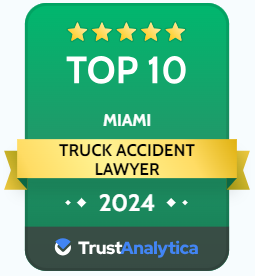Distracted driving accidents occurs when a driver operates a vehicle while engaging in another activity, such as texting, eating, adjusting the radio, or talking to passengers. These distractions can be visual, cognitive, or manual, and they reduce the driver’s ability to focus on the road, react to traffic conditions, and maintain proper control of the vehicle. As a result, the risk of serious crashes and injuries increases significantly.
How Is Distracted Driving Legally Defined?
Here’s a general framework of how distracted driving is often legally defined:
Visual Distractions: Visual distractions involve taking one’s eyes off the road. This can include activities like looking at a smartphone, reading a map, changing the radio station, or observing something inside the vehicle that’s not related to driving.
Cognitive Distractions: Cognitive distractions refer to activities that take the driver’s mind off the task of driving. This can include daydreaming, engaging in deep conversations, or being preoccupied with personal matters.
Manual Distractions: Manual distractions involve taking one or both hands off the steering wheel. Examples include texting, using a handheld phone, eating, drinking, or reaching for objects in the vehicle.
Multitasking: Engaging in any of the above distractions while operating a vehicle is often considered multitasking, which impairs a driver’s ability to respond effectively to the road and other traffic.

Florida Laws Against Distracted Driving
Florida Statute 316.305, The Wireless Communications While Driving Law, took effect on July 1st, 2019 and it requires all drivers to put their phones down and focus on the road. Key points of Florida Statute 316.305 include:
Prohibition of Texting While Driving: The statute prohibits drivers from manually typing or entering text into a wireless communication device, such as a smartphone or tablet, while operating a motor vehicle that is in motion. This includes sending, reading, or writing messages, emails, or other forms of text-based communication.
Primary Offense: The statute designates texting while driving as a primary offense, meaning law enforcement officers can pull over drivers solely for this offense without needing another primary reason for the traffic stop.
Hands-Free Use Allowed: While the statute bans manual texting, it allows drivers to use wireless communication devices in a hands-free manner. This means that using voice-activated features, such as voice-to-text and making calls through Bluetooth or other hands-free systems, is generally permissible.
Exceptions: The statute provides exceptions for using wireless communication devices for emergency purposes, such as reporting accidents, crimes, or medical emergencies to authorities.
Penalties: Violations of this statute typically result in fines and points on the driver’s license. The penalties may vary based on the number of prior offenses. Additionally, in certain circumstances, such as school and work zones, fines may be doubled.
It is important to note, though, that texting is not the only form of distracted driving that is against the law. Distracted driving refers to any activity that diverts a driver’s attention away from the primary task of operating a vehicle. While texting while driving is a common and widely recognized form of distracted driving, there are other activities that can also be considered distractions and are prohibited by law in many jurisdictions.
Is the Distracted Driver Always at Fault?
Fault in a car crash is determined by a thorough examination of various factors, and while texting can be a contributing factor, it may not always be the sole determinant of fault. In many jurisdictions, including those that follow a principle of contributory negligence or comparative negligence, fault can be shared among multiple parties.
If both drivers involved in a crash were engaged in negligent behavior, such as texting and driving, the degree to which each driver contributed to the crash will be assessed. If one driver was texting and another driver was engaging in other forms of distracted behavior, such as finding a new song to play, the combination of behaviors might have contributed to the crash. Both drivers could share responsibility.
Contact a Distracted Driving Accidents Attorney
If you were in a car accident and the other driver was texting at the time of the collision or caused the collision by texting, it is very likely you have a good distracted driving accident case. That being said, texting and driving is not the only way their distracted driving could have caused the accident. If the other driver was eating, fighting with a passenger, putting on makeup, or doing a number of other things beyond driving, this will be important to your case.
After a car crash of any kind, it’s important to seek medical attention. Then, bring on the services of a Miami car accident law firm. AccidentLawFirm.com has been helping injured victims of South Florida for over a decade. Our law firm handles a variety of cases, including distracted driving cases. They caused your accident by being distracted, now you have medical bills piling up. You may even have lost wages and property damage to deal with. We’re here to help you collect the financial compensation you deserve. Call 786-882-2038 to schedule your consultation.












